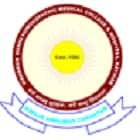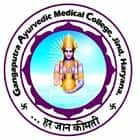- Engineering and Architecture
- Management and Business Administration
- Medicine and Allied Sciences
- Law
- Animation and Design
- Media, Mass Communication and Journalism
- Finance & Accounts
- Computer Application and IT
- Pharmacy
- Hospitality and Tourism
- Competition
- School
- Study Abroad
- Arts, Commerce & Sciences
- Learn
- Online Courses and Certifications
- Biology
- Excretory Products and Their Elimination
Excretory Products and Their Elimination
The excretory system plays a vital role in maintaining homeostasis, which means keeping the internal environment of the body stable and balanced. The process known as excretion involves the removal of metabolic waste products, such as urea, carbon dioxide, and excess salt, from the body to prevent harm and ensure proper functioning.
This Story also Contains
- What is Excretion?
- What Are Excretory Products?
- Excretory Systems in Different Organisms
- The Human Excretory System
- Diseases of the Excretory System
- Role of the Excretory System in Osmoregulation
- Tips, Tricks, and Strategies to Prepare For Excretory Products and Their Elimination
- Weightage of Topics in Different Entrance Exams
- Types of Questions Asked on the Topic in Different Exams
- Recommended videos on "Excretory Products and Their Elimination"
.jpg)
In this chapter, students will explore the types of waste products, organs involved in excretion and the structure and function of the human excretory system. It also explains how different organisms eliminate waste in various ways, giving a clear understanding of how excretion supports both survival and overall health. This is an important chapter of Biology and is important for exams like NEET.
What is Excretion?
The term excretion refers to the biological processes of elimination whereby organisms remove waste coming from metabolic activities. This vital function prevents the accumulation of toxic substances that might damage to cellular processes. The excretory system regulates the amount and concentration of body fluids, eliminates metabolic wastes, and also helps maintain the correct pH level.
Also Read:
What Are Excretory Products?
Excretory products can be categorised broadly into two categories:
Metabolic Waste Products:
Urea: It is produced by the combination of ammonia in the liver; less toxic to the system than ammonia.
Uric Acid: It is a waste product produced due to nucleotide deamination; less soluble in water.
Ammonia: This is highly toxic and a waste product of protein breakdown; the excretory product of most aquatic animals.
Carbon Dioxide: It is breathed out as a product of cellular respiration.
Water: Lost through urination, sweat, and respiration.
Non-Metabolic Waste Products
Bile Pigments: A product of the breakdown of haemoglobin.
Excess Salts: Eliminated to maintain the electrolytes within normal ranges.
NCERT Notes Subject Wise Link:
NEET
NEET AYUSH All India Counseling

Shri BM Kankanawadi Ayurved Mahavidhyalaya and Kahe's Ayurveda Hospital and Medical Research Centre, Belagavi
Private
₹- - ₹2475000
Belgaum,Karnataka

Ayurved Mahavidyalaya Sion Mumbai - Ayurved Mahavidyalaya and Seth R V Ayurved Hospital, Mumbai
Government
Mumbai,Maharashtra

Sri Jayendra Saraswathi Ayurveda College and Hospital, Chennai
Private
₹- - ₹1598000
Chennai,Tamil Nadu

Dr DY Patil Homoeopathic Medical College and Research Centre, Pune
Private
₹- - ₹1125000
Pune,Maharashtra

VMMC - Safdarjung Hospital - Vardhman Mahavir Medical College and Safdarjung Hospital, New Delhi
Government
New Delhi,Delhi

Atal Bihari Vajpayee Institute of Medical Sciences and Dr Ram Manohar Lohia Hospital, New Delhi
Government
New Delhi,Delhi

IMS BHU - Institute of Medical Sciences Banaras Hindu University, Varanasi
Government
₹52734 - ₹123766
Varanasi,Uttar Pradesh

ITRA Jamnagar - Institute of Teaching and Research in Ayurveda, Jamnagar
Government
₹- - ₹200000
Jamnagar,Gujarat

National Institute of Ayurveda Deemed to be University, Panchkula
Government
₹- - ₹201984
Panchkula,Haryana

Bundelkhand Government Ayurvedic College and Hospital, Jhansi
Government
₹- - ₹78000
Jhansi,Uttar Pradesh

Swami Kalyan Dev Government Ayurvedic College and Hospital, Muzaffarnagar
Government
Muzaffarnagar,Uttar Pradesh
.png)
Baba Kheta Nath Government Ayurvedic College and Hospital, Narnaul
Government
₹- - ₹69669
Narnaul,Haryana

Ajmal Khan Tibbiya College, Aligarh Muslim University, Aligarh
Government
₹- - ₹70290
Aligarh,Uttar Pradesh

Sri Lal Bahadur Shastri Smarak Government Ayurvedic College and Hospital, Handia
Government
Allahabad,Uttar Pradesh

DSRRAU Jodhpur - Dr Sarvepalli Radhakrishnan Rajasthan Ayurved University, Jodhpur
Government
Jodhpur,Rajasthan

Government Autonomus Dhanwantri Ayurveda College and Hospital, Ujjain
Government
Ujjain,Madhya Pradesh

Pt Khushilal Sharma Government Autonomous Ayurveda College and Institute, Bhopal
Government
₹- - ₹217500
Bhopal,Madhya Pradesh

Rajiv Gandhi Government Post Graduate Ayurvedic College, Kangra
Government
₹- - ₹179950
Gharnot,Himachal Pradesh
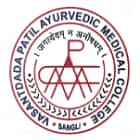
Vasantdada Patil Ayurvedic Medical College and Institute of Yoga, Sangli
Government
Sangli,Maharashtra

Pt Jawaharlal Nehru State Homoeopathic Medical College and Hospital, Kanpur
Government
Kanpur,Uttar Pradesh

Dr BR Sur Homeopathic Medical College, Hospital and Research Centre, New Delhi
Government
₹- - ₹93700
New Delhi,Delhi

State Lal Bahadur Shastri Homeopathic Medical College and Hospital, Prayagraj
Government
Prayagraj,Uttar Pradesh

State Dr Brij kishore Homoeopathic Medical College and Hospital, Faizabad
Government
Faizabad,Uttar Pradesh

Dr Allu Ramalingaiah Government Homeopathic Medical College, Rajahmundry
Government
Rajahmundry,Andhra Pradesh

Shaheed Raja Hari Prasad Mal Government Homeopathic Medical College and Hospital, Gorakhpur
Government
Gorakhpur,Uttar Pradesh

State Shri Durgaji Homoeopathic Medical College and Hospital, Azamgarh
Government
Azamgarh,Uttar Pradesh

Hakim Syed Ziaul Hasan Government Autonomous Unani Medical College and Hospital, Bhopal
Government
Bhopal,Madhya Pradesh

Dr Gururaju Government Homoeopathic Medical College and Hospital, Gudivada
Government
Gudivada,Andhra Pradesh

Government Unani Medical College and Hospital, Ganderbal, Kashmir
Government
Ganderbal,Jammu and Kashmir

Mahatma Gandhi Ayurved College Hospital and Research Centre, Wardha
Private
₹- - ₹3350000
Wardha,Maharashtra

Vinayaka Mission's Homoeopathic Medical College and Hospital, Salem
Private
₹- - ₹631000
Salem,Tamil Nadu
North Eastern Institute of Ayurveda and Homeopathy, Shillong
Government
₹- - ₹107910
Shillong,Meghalaya
Pt Shivnath Shastri Government Autonomous Ayurved College and Hospital, Burhanpur
Government
Burhanpur,Madhya Pradesh
Maharashtra MBBS/BDS Counselling

TNMC Mumbai - Topiwala National Medical College and BYL Nair Charitable Hospital, Mumbai
Government
Mumbai,Maharashtra

HBT Medical College and Dr RN Cooper Municipal Medical College and General Hospital, Mumbai
Government
₹- - ₹689850
Mumbai,Maharashtra

Ayurved Mahavidyalaya Sion Mumbai - Ayurved Mahavidyalaya and Seth R V Ayurved Hospital, Mumbai
Government
Mumbai,Maharashtra

Pune District Education Association's College of Ayurveda and Research Centre, Pune
Private
₹- - ₹1188000
Pune,Maharashtra

KJSMC Mumbai - KJ Somaiya Medical College and Research Centre, Mumbai
Private
₹- - ₹5400000
Mumbai,Maharashtra

Smt Chandaben Mohanbhai Patel Homoeopathic Medical College, Mumbai
Private
₹- - ₹726750
Mumbai,Maharashtra

MA Rangoonwala College of Dental Sciences and Research Centre, Pune
Private
₹- - ₹1313745
Pune,Maharashtra

Rajarshee Chhatrapati Shahu Maharaj Government Medical College and CPR Hospital, Kolhapur
Government
Kolhapur,Maharashtra

SBHGMC Dhule - Shri Bhausaheb Hire Government Medical College and Hospital, Dhule
Government
₹- - ₹655935
Dhule,Maharashtra

Government Medical College and District Hospital, Ratnagiri
Government
₹- - ₹653100
Ratnagiri,Maharashtra

SVNGMC Yavatmal - Shri Vasantrao Naik Government Medical College, Yavatmal
Government
₹- - ₹663300
Bhoyar,Maharashtra

RGMC Thane - Rajiv Gandhi Medical College and Chhatrapati Shivaji Maharaj Hospital, Thane
Government
₹- - ₹667170
Thane,Maharashtra

GDCH Nagpur - Government Dental College and Hospital, Nagpur
Government
₹- - ₹2413625
Nagpur,Maharashtra

DUPMC Jalgaon - Dr Ulhas Patil Medical College and General Hospital, Jalgaon
Private
₹- - ₹3150000
Jalgaon,Maharashtra

VIMS Ahmednagar - Dr Vitthalrao Vikhe Patil Foundation's Medical College and Hospital, Ahmednagar
Private
₹- - ₹5184000
Ahmednagar,Maharashtra

Dr Panjabrao Alias Bhausaheb Deshmukh Memorial Medical College, Amravati
Private
₹- - ₹4614000
Amravati,Maharashtra

Annasaheb Chudaman Patil Memorial Medical College and Hospital, Dhule
Private
₹- - ₹3786580
Dhule,Maharashtra

Vasantdada Patil Ayurvedic Medical College and Institute of Yoga, Sangli
Government
Sangli,Maharashtra

Government Dental College and Hospital, Medical College Campus, Aurangabad
Government
Aurangabad,Maharashtra

Mahatma Gandhi Mission's Dental College and Hospital, Navi Mumbai
Private
₹- - ₹2102505
Navi Mumbai,Maharashtra

Bharatiya Sanskriti Darshan Trust's Ayurved Mahavidyalaya, Wagholi
Private
₹- - ₹675000
Kesnand,Maharashtra

Lt Sunil Ramshingji Chunawale Ayurved College and Dr Hedgewar Rugnalaya, Chikhali
Private
₹- - ₹615000
Buldhana,Maharashtra

Shri Ramachandra Institute of Medical Sciences, Aurangabad
Private
₹- - ₹3881835
Aurangabad,Maharashtra

Late Babruwan Vitthalrao Kale Manjara Ayurved Medical College and Hospital, Latur
Private
₹- - ₹706491
Latur,Maharashtra

Shri Vivekanand Nursing Home Trust's Ayurved Mahavidyalaya and Chikitsalaya, Rahuri
Private
₹- - ₹923391
Rahuri,Maharashtra

Govindrao Wanjari Ayurvedic Hospital and Research Center, Nagpur
Private
₹- - ₹787500
Nagpur,Maharashtra

Smt Vimladevi Ayurvedic Medical College and Hospital, Chandrapur
Private
₹- - ₹1116000
Chandrapur,Maharashtra

Sangam Sevabhavi Trusts Ayurved Medical College and Sanjivan Hospital, Ahmednagar
Private
₹- - ₹1006395
Ahmednagar,Maharashtra

Shantabai Shivshankar Arali Ayurvedic Hospital and College, Sangli
Private
₹- - ₹825000
Sangli,Maharashtra

Dr Shubhangi Pradeep Patil Ayurvedic Medical College, Korochi, Ichalkaranji
Private
₹- - ₹769500
Kolhapur,Maharashtra

Mahila Utkarsh Pratishthan's Ayurved College, Hospital and Research Centre, Washim
Private
Washim,Maharashtra

Takhatmal Shrivallabh Homoeopathic Medical College and Hospital, Amravati
Private
₹- - ₹297000
Amravati,Maharashtra

MH Foundation's Homoeopathic Medical College and Hospital, Sangamner
Private
₹- - ₹557694
Sangamner,Maharashtra

Bhausaheb Mulak Ayurved Mahavidhyalaya and Medical And Science Research Hospital, Nagpur
Private
₹- - ₹1710000
Nagpur,Maharashtra

Hon Shri Annasaheb Dange Ayurved Medical College, Post Graduate and Research Center, Sangli
Private
₹- - ₹1800000
Ashta,Maharashtra

Rashtrasant Janardhan Swami Ayurved Medical College and Research Centre, Ahmednagar
Private
₹- - ₹675000
Ahmednagar,Maharashtra

Datta Meghe Ayurved College, Hospital and Research Centre, Nagpur
Private
₹- - ₹950000
Nagpur,Maharashtra

Dr GD Pol Foundation YMT Ayurvedic Medical College and Hospital PG Institute, Navi Mumbai
Private
₹- - ₹1249200
Navi Mumbai,Maharashtra

Ayurved Mahavidyalaya and Shri Sant Eknath Rugnalaya, Shevgaon
Private
₹- - ₹881000
Shevgaon,Maharashtra

Shri Prakashchand Jain Ayurvedic Medical College, Hospital and Research, Jalgaon
Private
₹- - ₹787500
Jalgaon,Maharashtra

Smt Shalinitai Meghe Ayurved College Hospital and Research Center, Bhandara
Private
₹- - ₹693000
Bhandara,Maharashtra

Bhausaheb Mulak Ayurved College and Research Hospital, Butibori
Private
₹- - ₹377640
Nagpur,Maharashtra

MIMER Pune - Maharashtra Institute of Medical Education and Research, Pune
Private
Talegaon Dabhade,Maharashtra

SMBT Institute of Medical Sciences and Research Center, Nashik
Private
₹- - ₹6345085
Igatpuri,Maharashtra

ARMCH Solapur - Ashwini Rural Medical College Hospital and Research Centre, Kumbhari
Private
₹- - ₹4471330
Solapur,Maharashtra

Dakshin Kesri Muni Mishrilalji Homoeopathic Medical College, Aurangabad
Private
₹- - ₹462735
Aurangabad,Maharashtra

Yashwant Ayurvedic College Post Graduate Training and Research Centre, Kodoli
Private
Panhala,Maharashtra

Indian Institute of Medical Sciences Ayurved College and Hospital, Nashik
Private
₹- - ₹808875
Nashik,Maharashtra

NKP Salve Institute of Medical Sciences and Research Centre and Lata Mangeshkar Hospital, Nagpur
Private
₹- - ₹5893035
Nagpur,Maharashtra

Ashokrao Mane Ayurvedic Medical College Hospital and Research Centre, Kolhapur
Private
Kolhapur,Maharashtra

Chhatrapati Shahu Maharaj Shikshan Sanstha Dental College and Hospital, Aurangabad
Private
₹- - ₹1428000
Aurangabad,Maharashtra

Dr Gunwantrao Sarode Ayurved Medical College, Hospital and Research Center, Jalgaon
Private
₹- - ₹787500
Jalgaon,Maharashtra

Sindhudurg Shikshan Prasarak Mandal Medical College and Lifetime Hospital, Sindhudurg
Private
Sindhudurg,Maharashtra

Vilasrao Deshmukh Ayurvedic Medical College and Research Center, Nagpur
Private
₹- - ₹787500
Nagpur,Maharashtra

Hanuman Shikshan Prasarak Mandal's Ayurvedic Medical College, Peth Vadgaon
Private
₹- - ₹1072500
Peth,Maharashtra

Tatyasaheb Kore Dental College and Research Center, Kolhapur
Private
₹- - ₹1607500
June Pargaon,Maharashtra

Mahatma Gandhi Vidyamandir's Karmaveer Bhausaheb Hiray Dental College and Hospital, Panchavati
Private
₹- - ₹1616000
Nashik,Maharashtra

Shamrao Patil Institute of Ayurveda Research Center and Hospital, Paniv
Private
₹- - ₹789000
Solapur,Maharashtra

Vedantaa Institute of Medical Science Vedantaa Hospital and Research Center, Palghar
Private
Dhundalwadi,Maharashtra

Foster Development's Homoeopathic Medical College and Hospital, Aurangabad
Private
Aurangabad,Maharashtra

Indutai Gaikwad Patil Ayurved College, Hospital and Research Center, Nagpur
Private
₹- - ₹787500
Nagpur,Maharashtra

Jaywant Institute of Medical Sciences and Jaywant Ayurvedic Hospital and Research Center, Sangli
Private
₹- - ₹787500
Sangli,Maharashtra

Panchasheel Homoeopathic Medical College and Hospital, Khamgaon
Private
₹- - ₹270000
Khamgaon,Maharashtra

Smt Sumitrabai Thakare Ayurvedic College and Hospital, Yavatmal
Private
₹- - ₹787500
Yavatmal,Maharashtra

Loknete Rajarambapu Patil Ayurvedic Medical College, Hospital Post Gradute Institute and Research Center, Sangli
Private
₹- - ₹1115000
Sangli,Maharashtra

Dr GD Pol Foundations YMT Homoeopathic Medical College Hospital, Navi Mumbai
Private
₹- - ₹627750
Navi Mumbai,Maharashtra

SMBT Dental College and Hospital and Post Graduate Research Center, Sangamner
Private
Sangamner,Maharashtra

Dr Bhanudas Dhere Ayurved Mahavidyalaya and Rugnalaya, Ahmednagar
Private
₹- - ₹790280
Ahmednagar,Maharashtra

Sau Vandana N Tasgaonkar Ayurved Mahavidyalaya and Research Centre, Karjat
Private
₹- - ₹787500
Karjat,Maharashtra

Sai Ayurveda Medical College and Research Institute, Aurangabad
Private
₹- - ₹1120875
Aurangabad,Maharashtra

Sau Surekhatai Prakash Kolpe Ayurveda College and Research Centre, Ahmednagar
Private
Ahmednagar,Maharashtra

MIDSR Latur - Maharashtra Institute of Dental Science and Research, Latur
Private
₹- - ₹1212505
Latur,Maharashtra

Rural Institute of Ayurved Research Center and Hospital, Satara
Private
₹- - ₹1442043
Satara,Maharashtra

Swami Vivekanand Ayurved Medical College and Research Center, Shrigonda
Private
₹- - ₹895500
Shrigonda,Maharashtra

Shivajirao Pawar Ayurvedic Medical College and Research Center, Ahmednagar
Private
₹- - ₹825000
Ahmednagar,Maharashtra

RJS Homoeopathic Medical College and Research Centre, Ahmednagar
Private
₹- - ₹360000
Ahmednagar,Maharashtra

Swargiya Dadasaheb Kalmegh Smruti Dental College and Hospital, Hingna
Private
₹- - ₹1645000
Nagpur,Maharashtra

Atal Bihari Vajpayee Homoeopathic Medical College and Hospital, Ahmednagar
Private
₹- - ₹362700
Ahmednagar,Maharashtra

Matoshri Asarabai Darade Homoeopathic and Medical College and Hospital, Babhulgaon
Private
₹- - ₹434250
Babhulgaon,Maharashtra

Shri Prakashchand Jain Homoeopathic Medical College, Hospital and Research, Jalgaon
Private
₹- - ₹500000
Jalgaon,Maharashtra

Late Shri Yashwantrao Chavan Memorial Medical and Rural Development Foundation's Dental College and Hospital, Ahmednagar
Private
₹- - ₹1841140
Ahmednagar,Maharashtra

SMFRI's Vamanrao Ithape Homeopathic Medical College and Hospital, Ahmednagar
Private
Sangamner,Maharashtra

PD Jain Homoeopathic Medical College Hospital and Post Graduate Institute, Parbhani
Private
Parbhani,Maharashtra

Shri Chamundamata Homoeopathic Medical College and Hospital, Jalgaon
Private
₹- - ₹315000
Jalgaon,Maharashtra

Saraswati-Dhanwantari Dental College and Hospital and Post Graduate Research Institute, Parbhani
Private
Parbhani,Maharashtra
Dr RN Lahoti Homoeopathic College, Hospital and Research Institute, Buldhana
Private
Buldhana,Maharashtra
Dr RN Lahoti Ayurvedic College, Hospital and Research Institute, Buldhana
Private
Buldhana,Maharashtra
Shri Bhagwan Homoeopathic Medical College and IGM Hospital, Aurangabad
Private
₹- - ₹450000
Aurangabad,Maharashtra
Late Mrs Housabai Homoeopathic Medical College and Hospital, Kolhapur
Private
₹- - ₹476955
Kolhapur,Maharashtra
Sau Shantadevi Vedprakash Patil Ayurved College and Research Institute, Hingoli
Private
Hingoli,Maharashtra
Sau Shantadevi Vedprakash Patil Homoeopathy College and Research Institute, Hingoli
Private
Hingoli,Maharashtra
Sharadchandraji Pawar Homoeopathic Medical College and Hospital, Ahmednagar
Private
Ahmednagar,Maharashtra
Arunachal Pradesh MBBS/BDS Admissions

JNMC Raipur - Pt Jawahar Lal Nehru Memorial Medical College, Raipur
Government
₹- - ₹250000
Raipur,Chhattisgarh

Late Shri Lakhiram Agrawal Memorial Government Medical College, Raigarh
Government
Bendrchuwa,Chhattisgarh

TRIHMS, Naharlagun - Tomo Riba Institute Health and Medical Sciences, Naharlagun
Government
Naharlagun,Arunachal Pradesh

DSRRAU Jodhpur - Dr Sarvepalli Radhakrishnan Rajasthan Ayurved University, Jodhpur
Government
Jodhpur,Rajasthan

College of Fisheries, Central Agricultural University, Lembucherra
Government
₹- - ₹11620
Agartala,Tripura

North East Nursing College of Health Sciences, Naharlagun
Private
₹- - ₹600000
Naharlagun,Arunachal Pradesh
NEET UG

BMCRI Bangalore - Bangalore Medical College and Research Institute, Bangalore
Government
Bangalore,Karnataka

Shri Atal Bihari Vajpayee Medical College and Research Institution, Bangalore
Government
₹- - ₹339615
Bengaluru,Karnataka

ESI Post Graduate Institute of Medical Sciences and Research, Bangalore
Government
Bangalore,Karnataka

Chikkamagaluru Institute of Medical Sciences, Chikkamagaluru
Government
₹- - ₹355950
Chikkamagaluru,Karnataka

Chitradurga Medical College and Research Institute, Chitradurga
Government
₹- - ₹461560
Chitradurga,Karnataka

Jagadguru Gangadhar Mahaswamigalu Moorsavirmath Medical College, Hubli
Private
₹- - ₹7905000
Hubli,Karnataka

Sri Siddhartha Institute of Medical Sciences and Research Centre, Bengaluru
Private
Bangalore,Karnataka

MCODS Mangalore - Manipal College of Dental Sciences, Mangalore
Private
₹- - ₹1960000
Mangalore,Karnataka

Shri BM Kankanawadi Ayurved Mahavidhyalaya and Kahe's Ayurveda Hospital and Medical Research Centre, Belagavi
Private
₹- - ₹2475000
Belgaum,Karnataka

ABSMIDS Mangalore - AB Shetty Memorial Institute of Dental Sciences, Mangalore
Private
₹- - ₹2013500
Mangalore,Karnataka

SMS Medical College Jaipur - Sawai Man Singh Medical College, Jaipur
Government
₹- - ₹431250
Jaipur,Rajasthan

AIIMS Bibinagar - All India Institute of Medical Sciences Bibinagar
Government
₹- - ₹6789
Hyderabad,Telangana

IPGMER Kolkata - Institute of Post Graduate Medical Education and Research, Kolkata
Government
₹- - ₹29250
Kolkata,West Bengal

NRS Medical College - Nilratan Sircar Medical College, Kolkata
Government
₹- - ₹40500
Kolkata,West Bengal

TNMC Mumbai - Topiwala National Medical College and BYL Nair Charitable Hospital, Mumbai
Government
Mumbai,Maharashtra

HBT Medical College and Dr RN Cooper Municipal Medical College and General Hospital, Mumbai
Government
₹- - ₹689850
Mumbai,Maharashtra
.jpg)
CMSDH Kolkata - College of Medicine and Sagore Dutta Hospital, Kolkata
Government
₹- - ₹47020
Kolkata,West Bengal

ESIC Medical College and Postgraduate Institute of Medical Sciences and Research, Chennai
Government
₹- - ₹450000
Chennai,Tamil Nadu

Ayurved Mahavidyalaya Sion Mumbai - Ayurved Mahavidyalaya and Seth R V Ayurved Hospital, Mumbai
Government
Mumbai,Maharashtra

BVMC Pune - Bharati Vidyapeeth Deemed University Medical College, Pune
Private
₹- - ₹11088855
Pune,Maharashtra

SRMCRI Chennai - Sri Ramachandra Medical College and Research Institute, Chennai
Private
₹- - ₹13500000
Chennai,Tamil Nadu

DYPMC Pune - Dr D Y Patil Medical College Hospital and Research Centre, Pune
Private
₹- - ₹12150000
Pune,Maharashtra

SRM Medical College Hospital and Research Centre, Kattankulathur, Chennai
Private
₹- - ₹12610000
Chennai,Tamil Nadu

Sri Jayendra Saraswathi Ayurveda College and Hospital, Chennai
Private
₹- - ₹1598000
Chennai,Tamil Nadu

Dr DY Patil Homoeopathic Medical College and Research Centre, Pune
Private
₹- - ₹1125000
Pune,Maharashtra

VMMC - Safdarjung Hospital - Vardhman Mahavir Medical College and Safdarjung Hospital, New Delhi
Government
New Delhi,Delhi

Maulana Azad Medical College - Maulana Azad Medical College, New Delhi
Government
₹- - ₹11002
New Delhi,Delhi

Atal Bihari Vajpayee Institute of Medical Sciences and Dr Ram Manohar Lohia Hospital, New Delhi
Government
New Delhi,Delhi

JIPMER Puducherry - Jawaharlal Institute of Postgraduate Medical Education and Research Puducherry
Government
₹- - ₹35625
Puducherry,Puducherry

AIIMS Jodhpur - All India Institute of Medical Sciences Jodhpur
Government
₹- - ₹6789
Jodhpur,Rajasthan

UCMS Delhi - University College of Medical Sciences, University of Delhi, Delhi
Government
₹- - ₹120875
New Delhi,Delhi
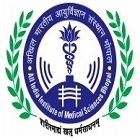
AIIMS Bhopal - All India Institute of Medical Sciences Bhopal
Government
₹- - ₹6789
Bhopal,Madhya Pradesh

GMCH Chandigarh - Government Medical College and Hospital, Chandigarh
Government
₹- - ₹112500
Chandigarh,Chandigarh
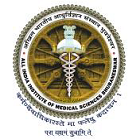
AIIMS Bhubaneswar - All India Institute of Medical Sciences Bhubaneswar
Government
₹- - ₹13807
Bhubaneshwar,Odisha

AIIMS Rishikesh - All India Institute of Medical Sciences Rishikesh
Government
₹- - ₹6789
Rishikesh,Uttarakhand

IMS BHU - Institute of Medical Sciences Banaras Hindu University, Varanasi
Government
₹52734 - ₹123766
Varanasi,Uttar Pradesh

AIIMS Raipur - All India Institute of Medical Sciences Raipur
Government
₹- - ₹6789
Raipur,Chhattisgarh

AIIMS Bathinda - All India Institute of Medical Sciences Bathinda
Government
₹- - ₹6789
Bathinda,Punjab

NDMC Medical College Delhi - North Delhi Municipal Corporation Medical College, New Delhi
Government
₹- - ₹301000
New Delhi,Delhi

AIIMS Mangalagiri - All India Institute of Medical Sciences Mangalagiri
Government
₹- - ₹6789
Mangalagiri,Andhra Pradesh

AIIMS Bilaspur - All India Institute of Medical Sciences Bilaspur
Government
Bilaspur,Himachal Pradesh
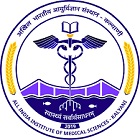
AIIMS Kalyani - All India Institute of Medical Sciences Kalyani
Government
₹- - ₹9504
Kalyani,West Bengal

AIIMS Gorakhpur - All India Institute of Medical Sciences Gorakhpur
Government
₹- - ₹13807
Gorakhpur,Uttar Pradesh

GMC Srinagar - Government Medical College, Srinagar, Kashmir
Government
₹- - ₹68449
Srinagar,Jammu and Kashmir

AIIMS Raebareli - All India Institute of Medical Sciences Raebareli
Government
₹- - ₹7089
Raebareli,Uttar Pradesh

JNMC Aligarh - Jawaharlal Nehru Medical College, Aligarh Muslim University, Aligarh
Government
Aligarh,Uttar Pradesh

PGIMS Rohtak - Pt Bhagwat Dayal Sharma Post Graduate Institute of Medical Sciences, Rohtak
Government
₹- - ₹173140
Rohtak,Haryana
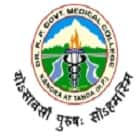
RPGMC Kangra - Dr Rajendra Prasad Government Medical College, Tanda
Government
Kangra,Himachal Pradesh

RNT Medical College Udaipur - Rabindra Nath Tagore Medical College, Udaipur
Government
₹- - ₹435750
Udaipur,Rajasthan

SLBSGMC&H Mandi - Shri Lal Bahadur Shastri Government Medical College, Mandi
Government
Ner Chowk,Himachal Pradesh

JLN Medical College Ajmer - Jawaharlal Nehru Medical College, Ajmer
Government
₹- - ₹410550
Ajmer,Rajasthan

BRD Medical College Gorakhpur - Baba Raghav Das Medical College, Gorakhpur
Government
Gorakhpur,Uttar Pradesh

PDUMC Rajkot - Pandit Deendayal Upadhyay Medical College, Rajkot
Government
₹- - ₹112500
Rajkot,Gujarat

Jawaharlal Institute of Postgraduate Medical Education and Research, Karaikal
Government
₹- - ₹35615
Karaikal,Puducherry

BPS Goverment Medical College - BPS Government Medical College for Women, Sonepat
Government
Sonipat,Haryana

MRAMC Ambedkarnagar - Mahamaya Rajkiya Allopathic Medical College, Ambedkarnagar
Government
Ismail Pur,Uttar Pradesh

NSCBMC Jabalpur - Netaji Subhash Chandra Bose Medical College and Hospital, Jabalpur
Government
₹- - ₹463020
Jabalpur,Madhya Pradesh

Government Medical College and Super Facility Hospital, Chakrapanpur
Government
Chakrapanpur,Uttar Pradesh

Rajarshee Chhatrapati Shahu Maharaj Government Medical College and CPR Hospital, Kolhapur
Government
Kolhapur,Maharashtra

VIMS Nalanda - Bhagwan Mahavir Institute of Medical Sciences, Pawapuri
Government
₹- - ₹60750
Nalanda,Bihar

Rajarshi Dashrath Autonomous State Medical College, Ayodhya
Government
₹- - ₹198000
Ayodhya,Uttar Pradesh

Pt Jawahar Lal Nehru Government Medical College and Hospital, Chamba
Government
Chamba,Himachal Pradesh

AIIMS Deoghar - All India Institute of Medical Sciences Deoghar
Government
₹- - ₹6789
Deoghar,Jharkhand

ANMMCH Gaya - Anugrah Narayan Magadh Medical College and Hospital, Gaya
Government
₹- - ₹33400
Gaya,Bihar

VIMSAR Burla - Veer Surendra Sai Institute of Medical Sciences and Research, Burla
Government
₹- - ₹170750
Burla,Odisha

JNMC Raipur - Pt Jawahar Lal Nehru Memorial Medical College, Raipur
Government
₹- - ₹250000
Raipur,Chhattisgarh

GTVMMC Tiruvannamalai - Government Tiruvannamalai Medical College and Hospital, Tiruvannamalai
Government
Tiruvannamalai,Tamil Nadu

Virendra Kumar Sakhlecha Government Medical College, Neemuch
Government
₹- - ₹450000
Neemuch,Madhya Pradesh

GMC Khandwa - Nandkumar Singh Chouhan Government Medical College, Khandwa
Government
₹- - ₹450000
Khandwa,Madhya Pradesh

Maharshi Devraha Baba Autonomous State Medical College, Deoria
Government
₹- - ₹144000
Deoria,Uttar Pradesh

Madhav Prasad Tripathi Medical College and Hospital, Siddharthnagar
Government
Siddharthnagar,Uttar Pradesh

Soban Singh Jeena Government Institute of Medical Science and Research, Almora
Government
Almora,Uttarakhand

Shrimant Rajmata Vijayaraje Scindia Medical College, Shivpuri
Government
₹- - ₹450000
Shivpuri,Madhya Pradesh

SBHGMC Dhule - Shri Bhausaheb Hire Government Medical College and Hospital, Dhule
Government
₹- - ₹655935
Dhule,Maharashtra

Dr Sone Lal Patel Autonomous State Medical College, Pratapgarh
Government
₹- - ₹162000
Pratapgarh,Uttar Pradesh

Maharaja Suhel Dev Autonomous State Medical College and Maharishi Balark Hospitals, Bahraich
Government
₹- - ₹162000
Bahraich,Uttar Pradesh

Veer Chandra Singh Garhwali Government Institute of Medical Science and Research, Srinagar
Government
Pauri Garhwal,Uttarakhand

Maharshree Vishwamitra Autonomous State Medical College - Autonomous State Medical College, Ghazipur
Government
Ghazipur,Uttar Pradesh

Barasat Government Medical College and Hospital, North 24 Parganas
Government
North 24 Parganas,West Bengal

JanNayak Karpoori Thakur Medical College and Hospital, Madhepura
Government
₹- - ₹79000
Madhepura,Bihar

Baba Kinaram Autonomous State Medical College, Chandauli
Government
₹- - ₹110000
Chandauli,Uttar Pradesh

Autonomous State Medical College, Lakhimpur Kheri
Government
₹- - ₹162000
Lakhimpur Kheri,Uttar Pradesh
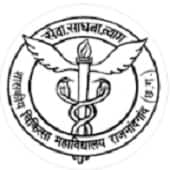
Bharat Ratna Late Shri Atal Bihari Vajpayee Memorial Government Medical College, Rajnandgaon
Government
Rajnandgaon,Chhattisgarh

Late Shri Lakhiram Agrawal Memorial Government Medical College, Raigarh
Government
Bendrchuwa,Chhattisgarh

Government Medical College and District Hospital, Ratnagiri
Government
₹- - ₹653100
Ratnagiri,Maharashtra

Sarat Chandra Chattopadhyay Government Medical College and Hospital, Howrah
Government
Howrah,West Bengal

GMC Ambikapur - Rajmata Shrimati Devendra Kumari Singhdeo Government Medical College, Ambikapur
Government
Ambikapur,Chhattisgarh

SVNGMC Yavatmal - Shri Vasantrao Naik Government Medical College, Yavatmal
Government
₹- - ₹663300
Bhoyar,Maharashtra

FAAMCH Barpeta - Fakhruddin Ali Ahmed Medical College and Hospital, Barpeta
Government
Dhan Bandha,Assam

Late Bali Ram Kashyap Memorial Government Medical College, Jagdalpur
Government
Pandripani,Chhattisgarh

Tamralipto Government Medical College and Hospital, Purba Medinipur
Government
Purba Medinipur,West Bengal

TRIHMS, Naharlagun - Tomo Riba Institute Health and Medical Sciences, Naharlagun
Government
Naharlagun,Arunachal Pradesh

NEIGRIHMS Shillong - North Eastern Indira Gandhi Regional Institute of Health and Medical Sciences, Shillong
Government
Shillong,Meghalaya

GMERS Medical College, Godhara - Government Medical College, Panchmahal, Godhra
Government
Godhra,Gujarat

RGMC Thane - Rajiv Gandhi Medical College and Chhatrapati Shivaji Maharaj Hospital, Thane
Government
₹- - ₹667170
Thane,Maharashtra

AIIMS Madurai - All India Institute of Medical Sciences Madurai
Government
₹- - ₹6876
Madurai,Tamil Nadu

Diamond Harbour Government Medical College and Hospital, Diamond Harbour
Government
Diamond Harbour,West Bengal

IGMCRI Kathirkamam - Indira Gandhi Medical College and Research Institute, Kathirkamam
Government
₹- - ₹381650
Puducherry,Puducherry

ANIIMS Port Blair - Andaman and Nicobar Islands Institute of Medical Sciences, Port Blair
Government
Port Blair,Andaman and Nicobar Islands

Himachal Pradesh Government Dental College and Hospital, Shimla
Government
₹- - ₹155000
Shimla,Himachal Pradesh

ITRA Jamnagar - Institute of Teaching and Research in Ayurveda, Jamnagar
Government
₹- - ₹200000
Jamnagar,Gujarat

National Institute of Ayurveda Deemed to be University, Panchkula
Government
₹- - ₹201984
Panchkula,Haryana

Bundelkhand Government Ayurvedic College and Hospital, Jhansi
Government
₹- - ₹78000
Jhansi,Uttar Pradesh

Swami Kalyan Dev Government Ayurvedic College and Hospital, Muzaffarnagar
Government
Muzaffarnagar,Uttar Pradesh

HIMSR New Delhi - Hamdard Institute of Medical Sciences and Research, New Delhi
Private
₹- - ₹7452500
New Delhi,Delhi
.png)
Baba Kheta Nath Government Ayurvedic College and Hospital, Narnaul
Government
₹- - ₹69669
Narnaul,Haryana

GDC Indore - Government Autonomous College of Dentistry, Indore
Government
₹- - ₹400000
Indore,Madhya Pradesh

Ajmal Khan Tibbiya College, Aligarh Muslim University, Aligarh
Government
₹- - ₹70290
Aligarh,Uttar Pradesh

Sri Lal Bahadur Shastri Smarak Government Ayurvedic College and Hospital, Handia
Government
Allahabad,Uttar Pradesh

DSRRAU Jodhpur - Dr Sarvepalli Radhakrishnan Rajasthan Ayurved University, Jodhpur
Government
Jodhpur,Rajasthan

GDCH Nagpur - Government Dental College and Hospital, Nagpur
Government
₹- - ₹2413625
Nagpur,Maharashtra

Government Autonomus Dhanwantri Ayurveda College and Hospital, Ujjain
Government
Ujjain,Madhya Pradesh

Pt Khushilal Sharma Government Autonomous Ayurveda College and Institute, Bhopal
Government
₹- - ₹217500
Bhopal,Madhya Pradesh

Rajiv Gandhi Government Post Graduate Ayurvedic College, Kangra
Government
₹- - ₹179950
Gharnot,Himachal Pradesh

MGPGI Pondicherry - Mahatma Gandhi Post Graduate Institute of Dental Sciences, Pondicherry
Government
₹- - ₹254170
Puducherry,Puducherry

Vasantdada Patil Ayurvedic Medical College and Institute of Yoga, Sangli
Government
Sangli,Maharashtra

Government Dental College and Hospital, Medical College Campus, Aurangabad
Government
Aurangabad,Maharashtra

Pt Jawaharlal Nehru State Homoeopathic Medical College and Hospital, Kanpur
Government
Kanpur,Uttar Pradesh

Dr BR Sur Homeopathic Medical College, Hospital and Research Centre, New Delhi
Government
₹- - ₹93700
New Delhi,Delhi

State Lal Bahadur Shastri Homeopathic Medical College and Hospital, Prayagraj
Government
Prayagraj,Uttar Pradesh

State Dr Brij kishore Homoeopathic Medical College and Hospital, Faizabad
Government
Faizabad,Uttar Pradesh

Dr Allu Ramalingaiah Government Homeopathic Medical College, Rajahmundry
Government
Rajahmundry,Andhra Pradesh

Rajah Muthiah Dental College and Hospital, Annamalai University, Annamalai Nagar
Government
₹- - ₹1250000
C.Kothangudi,Tamil Nadu

Shaheed Raja Hari Prasad Mal Government Homeopathic Medical College and Hospital, Gorakhpur
Government
Gorakhpur,Uttar Pradesh

State Shri Durgaji Homoeopathic Medical College and Hospital, Azamgarh
Government
Azamgarh,Uttar Pradesh

Hakim Syed Ziaul Hasan Government Autonomous Unani Medical College and Hospital, Bhopal
Government
Bhopal,Madhya Pradesh

Institute of Medical Sciences and SUM Hospital, Campus II, Phulnakhara
Private
₹- - ₹6727500
Phulnakhara,Odisha

Dr Gururaju Government Homoeopathic Medical College and Hospital, Gudivada
Government
Gudivada,Andhra Pradesh

KIMS Bhubaneswar - Kalinga Institute of Medical Sciences, Bhubaneswar
Private
₹- - ₹8400000
Bhubaneswar,Odisha

Government Unani Medical College and Hospital, Ganderbal, Kashmir
Government
Ganderbal,Jammu and Kashmir

IMS & SUM Hospital Bhubaneswar - Institute of Medical Sciences and SUM Hospital, Bhubaneswar
Private
₹- - ₹8977500
Bhubaneswar,Odisha

MMIMSR Mullana - Maharishi Markandeshwar Institute of Medical Sciences and Research, Mullana
Private
₹- - ₹8308300
Ambala,Haryana

Mahatma Gandhi Ayurved College Hospital and Research Centre, Wardha
Private
₹- - ₹3350000
Wardha,Maharashtra

MGMCRI Pondicherry - Mahatma Gandhi Medical College and Research Institute, Pondicherry
Private
Puducherry,Puducherry
.png)
Meenakshi Medical College Hospital and Research Institute, Kanchipuram
Private
₹- - ₹10350000
Kanchipuram,Tamil Nadu

SRM Kattankulathur Dental College and Hospital, Kattankulathur
Private
₹- - ₹1570000
Kattankulathur,Tamil Nadu

VMKVMC Salem - Vinayaka Mission's Kirupananda Variyar Medical College and Hospitals, Salem
Private
₹- - ₹10134000
Salem,Tamil Nadu

AVMC Puducherry - Aarupadai Veedu Medical College and Hospital, Puducherry
Private
₹- - ₹9677000
Kirumampakkam,Puducherry

Maharishi Markandeshwar College of Dental Sciences and Research, Mullana, Ambala
Private
Mullana,Haryana

Sri Lakshmi Narayana Institute of Medical Sciences, Puducherry
Private
₹- - ₹11375000
Puducherry,Puducherry

Vinayaka Mission's Homoeopathic Medical College and Hospital, Salem
Private
₹- - ₹631000
Salem,Tamil Nadu

SSSMCRI Kancheepuram - Shri Sathya Sai Medical College and Research Institute, Kancheepuram
Private
₹- - ₹10149750
Nellikuppam,Tamil Nadu

IGIDS Pondicherry - Indira Gandhi Institute of Dental Sciences, Pillaiyarkuppam
Private
₹- - ₹1465000
Puducherry,Puducherry
SPDC Wardha - Sharad Pawar Dental College and Hospital, Wardha
Private
₹- - ₹2242000
Sawangi,Maharashtra
North Eastern Institute of Ayurveda and Homeopathy, Shillong
Government
₹- - ₹107910
Shillong,Meghalaya
Pt Shivnath Shastri Government Autonomous Ayurved College and Hospital, Burhanpur
Government
Burhanpur,Madhya Pradesh
Karnataka MBBS/BDS Counselling

BMCRI Bangalore - Bangalore Medical College and Research Institute, Bangalore
Government
Bangalore,Karnataka

Shri Atal Bihari Vajpayee Medical College and Research Institution, Bangalore
Government
₹- - ₹339615
Bengaluru,Karnataka

ESI Post Graduate Institute of Medical Sciences and Research, Bangalore
Government
Bangalore,Karnataka

Chikkamagaluru Institute of Medical Sciences, Chikkamagaluru
Government
₹- - ₹355950
Chikkamagaluru,Karnataka

KIMS Bangalore - Kempegowda Institute of Medical Sciences, Bangalore
Private
₹- - ₹880357
Bangalore,Karnataka

Chitradurga Medical College and Research Institute, Chitradurga
Government
₹- - ₹461560
Chitradurga,Karnataka

VIMS Bangalore - Vydehi Institute of Medical Sciences and Research Centre, Bangalore
Private
Bangalore,Karnataka

Dr Chandramma Dayananda Sagar Institute of Medical Education and Research, Hubli
Private
Hubli,Karnataka

SSIMS & RC, Jnanashankara - S S Institute of Medical Sciences and Research Centre, Jnanashankara
Private
Davanagere,Karnataka

AIMS Mandya - Adichunchanagiri Institute of Medical Sciences and Research Centre, Bangalore
Private
Kadaballi,Karnataka

SIMSRC Bangalore - Sapthagiri Institute of Medical Sciences and Research Center, Bangalore
Private
Bangalore,Karnataka

SNMC Bagalkot - S Nijalingappa Medical College and HSK Hospital and Research Centre, Bagalkot
Private
Bagalkot,Karnataka

Sri Madhusudan Sai Institute of Medical Sciences and Research, Chikkaballapur
Private
Chikkaballapur,Karnataka

BMCH Chitradurga - Basaveshwara Medical College and Hospital, Chitradurga
Private
Chitradurga,Karnataka

Sri Chamundeshwari Medical College Hospital and Research Institute, Ramanagara
Private
Ramanagara,Karnataka

Jagadguru Gangadhar Mahaswamigalu Moorsavirmath Medical College, Hubli
Private
₹- - ₹7905000
Hubli,Karnataka

SDMCAH Hassan - Sri Dharmasthala Manjunatheshwara College of Ayurveda and Hospital, Hassan
Private
Hassan,Karnataka

SDM Dental College Dharwad - SDM College of Dental Sciences and Hospital, Dharwad
Private
₹- - ₹1999550
Dharwad,Karnataka

Adichunchanagiri Ayurvedic Medical College Hospital and Research, Bengaluru
Private
Bengaluru,Karnataka

Shri Jagadguru Gavisiddeshwara Ayurvedic Medical College and Hospital, Koppal
Private
Koppal,Karnataka

BIDS Bangalore - Bangalore Institute of Dental Sciences and Hospital, Bangalore
Private
Bangalore,Karnataka

Ramakrishna Ayurvedic Medical College Hospital and Research Centre, Bangalore
Private
Bangalore,Karnataka

Krishnadevaraya College of Dental Sciences and Hospital, Bangalore
Private
₹- - ₹573432
Bangalore,Karnataka

Basavaraj Patil Memorial Ayurvedic Medical College, Hospital and Research Centre, Bidar
Private
Bidar,Karnataka

BDCH Davangere - Bapuji Educational Association College of Dental Sciences, Davangere
Private
Davanagere,Karnataka

Aroor Laxminarayana Rao Memorial Ayurvedic Medical College and PG Centre, Koppa
Private
Chikkamagaluru,Karnataka

Shri Basaveshwara Ayurvedic Medical College Hospital and Research Centre, Kalaburagi
Private
Kalaburagi,Karnataka

Sri Paripoorna Sanathana Ayurveda Medical College, Hospital And Research Centre, Bengaluru
Private
Bengaluru,Karnataka

Rajashekaraiah Institute of Ayurvedic Medical Sciences and Hospital, Ramanagar
Private
Ramanagara,Karnataka

HKE Society's Dr Maalakaraddy Homoeopathic Medical College and Hospital, Kalaburagi
Private
Kalaburagi,Karnataka

SAMATA Ayurvedic Medical College, Hospital and Research Centre, Kalaburagi
Private
Kalaburagi,Karnataka

Shri Veer Pulikeshi Rural Ayurvedic Medical College Hospital and Research Centre, Badami
Private
Badami,Karnataka

Kalmathada Pujya Shri Virupaksha Shivacharya Ayurvedic Medical College and Hospital, Manvi
Private
Raichur,Karnataka

Shri Siddhivinayaka Rural Ayurvedic Medical College Hospital and Research Centre, Harugeri
Private
Harugeri,Karnataka

Sushrutha Institute of Ayurveda Medical Sciences and Research Center, Davangere
Private
₹- - ₹524700
Davangere,Karnataka

Bhagawan Mahaveer Jain Ayurvedic Medical College PG Centre and Hospital, Gadag
Private
Gadag,Karnataka

Dr NA Magadum Ayurvedic Medical College, Hospital and Research Centre, Ankali
Private
Ankali,Karnataka

Taluka Shikshan Prasarak Sahakara Mandali Ayurvedic Medical College and Hospital, Sindgi
Private
Sindgi Rural,Karnataka

Neel Ganga Ayurvedic Medical College Hospital and Research Centre, Basavakalyan
Private
Basavakalyan,Karnataka

Dr BD Jatti Homoeopathic Medical College Hospital and Post Graduate Research Centre, Dharwad
Private
Dharwad,Karnataka
UP MBBS/BDS Counselling

IIMSR Lucknow - Integral Institute of Medical Sciences and Research, Lucknow
Private
₹- - ₹8100000
Lucknow,Uttar Pradesh

Sardar Patel Post Graduate Institute of Dental and Medical Sciences, Lucknow
Private
Lucknow,Uttar Pradesh

Sardar Patel Institute of Ayurvedic Medical Sciences and Research Centre, Lucknow
Private
₹- - ₹1150650
Lucknow,Uttar Pradesh

Babu Yugraj Singh Ayurvedic Medical College and Hospital, Lucknow
Private
₹- - ₹938700
Lucknow,Uttar Pradesh

Javitri Institute of Ayurvedic Medical Sciences and Hospital, Lucknow
Private
₹- - ₹920700
Lucknow,Uttar Pradesh

Prabuddh Ayurvedic Medical College Hospital and Research Centre, Lucknow
Private
₹- - ₹1105650
Lucknow,Uttar Pradesh

BRD Medical College Gorakhpur - Baba Raghav Das Medical College, Gorakhpur
Government
Gorakhpur,Uttar Pradesh

MRAMC Ambedkarnagar - Mahamaya Rajkiya Allopathic Medical College, Ambedkarnagar
Government
Ismail Pur,Uttar Pradesh

Government Medical College and Super Facility Hospital, Chakrapanpur
Government
Chakrapanpur,Uttar Pradesh

Rajarshi Dashrath Autonomous State Medical College, Ayodhya
Government
₹- - ₹198000
Ayodhya,Uttar Pradesh

Maharshi Devraha Baba Autonomous State Medical College, Deoria
Government
₹- - ₹144000
Deoria,Uttar Pradesh

Madhav Prasad Tripathi Medical College and Hospital, Siddharthnagar
Government
Siddharthnagar,Uttar Pradesh

Dr Sone Lal Patel Autonomous State Medical College, Pratapgarh
Government
₹- - ₹162000
Pratapgarh,Uttar Pradesh

Maharaja Suhel Dev Autonomous State Medical College and Maharishi Balark Hospitals, Bahraich
Government
₹- - ₹162000
Bahraich,Uttar Pradesh

Maharshree Vishwamitra Autonomous State Medical College - Autonomous State Medical College, Ghazipur
Government
Ghazipur,Uttar Pradesh

Baba Kinaram Autonomous State Medical College, Chandauli
Government
₹- - ₹110000
Chandauli,Uttar Pradesh

Autonomous State Medical College, Lakhimpur Kheri
Government
₹- - ₹162000
Lakhimpur Kheri,Uttar Pradesh

Bundelkhand Government Ayurvedic College and Hospital, Jhansi
Government
₹- - ₹78000
Jhansi,Uttar Pradesh

Swami Kalyan Dev Government Ayurvedic College and Hospital, Muzaffarnagar
Government
Muzaffarnagar,Uttar Pradesh

Sri Lal Bahadur Shastri Smarak Government Ayurvedic College and Hospital, Handia
Government
Allahabad,Uttar Pradesh
.png)
School of Medical Sciences and Research, Greater Noida
Private
₹- - ₹5711935
Greater Noida,Uttar Pradesh

SRMS IMS Bareilly - Shri Ram Murti Smarak Institute of Medical Sciences, Bareilly
Private
₹- - ₹7696801
Bareilly,Uttar Pradesh

HIMS Lucknow - Hind Institute of Medical Sciences, Barabanki
Private
₹- - ₹6745023
Safedabad,Uttar Pradesh

Pt Jawaharlal Nehru State Homoeopathic Medical College and Hospital, Kanpur
Government
Kanpur,Uttar Pradesh

State Lal Bahadur Shastri Homeopathic Medical College and Hospital, Prayagraj
Government
Prayagraj,Uttar Pradesh

State Dr Brij kishore Homoeopathic Medical College and Hospital, Faizabad
Government
Faizabad,Uttar Pradesh

MMC Muzaffarnagar - Muzaffarnagar Medical College, Muzaffarnagar
Private
₹- - ₹6670367
Muzaffarnagar,Uttar Pradesh

Shaheed Raja Hari Prasad Mal Government Homeopathic Medical College and Hospital, Gorakhpur
Government
Gorakhpur,Uttar Pradesh

State Shri Durgaji Homoeopathic Medical College and Hospital, Azamgarh
Government
Azamgarh,Uttar Pradesh

NIIMS Gautam Budh Nagar - Noida International Institute of Medical Sciences, Gautam Budh Nagar
Private
₹- - ₹5788670
Gautam Budh Nagar,Uttar Pradesh

SIMS Hapur - Saraswathi Institute of Medical Sciences, Hapur
Private
₹- - ₹5741239
Anwarpur,Uttar Pradesh

Shri Gorakshnath Medical College Hospital and Research Centre, Gorakhpur
Private
Gorakhpur,Uttar Pradesh

National Capital Region Institute of Medical Sciences, Meerut
Private
₹- - ₹704119
Meerut,Uttar Pradesh

Ajay Sangaal Institute of Medical Science and Research, Shamli
Government
₹- - ₹5851273
Shamli,Uttar Pradesh

Rohilkhand Ayurvedic Medical College and Hospital, Bareilly
Private
₹- - ₹1074250
Bareilly,Uttar Pradesh

ITS Dental College Hospital and Research Centre, Greater Noida
Private
₹- - ₹1752000
Greater Noida,Uttar Pradesh

Shri Krishna Ayurvedic Medical College and Hospital, Varanasi
Private
₹- - ₹1310100
Varanasi,Uttar Pradesh

Ishan Ayurvedic Medical College and Research Centre, Greater Noida
Private
Greater Noida,Uttar Pradesh

Teerthanker Mahaveer Dental College and Research Centre, Moradabad
Private
₹- - ₹864000
Bagadpur,Uttar Pradesh

Gangasheel Ayurvedic Medical College and Hospital, Bareilly
Private
₹- - ₹1232700
Bareilly,Uttar Pradesh

Shree Bankey Bihari Dental College and Research Centre, Ghaziabad
Private
₹- - ₹1440000
Ghaziabad,Uttar Pradesh

Naiminath Ayurvedic Medical College, Hospital and Research Centre, Agra
Private
₹- - ₹1400000
Agra,Uttar Pradesh

Charak Ayurvedic Medical College, Hospital, and Research Centre, Meerut
Private
₹- - ₹918000
Meerut,Uttar Pradesh

Arnav Ayurvedic Medical College and CNS Ayurvedic Chikitsalaya, Barabanki
Private
Barabanki,Uttar Pradesh

Institute of Ayurveda Major SD Singh University, Farrukhabad
Private
₹- - ₹1138050
Farrukhabad,Uttar Pradesh

Kalawati Ayurvedic Medical College and Research Center, Kasganj
Private
₹- - ₹1060650
Kasganj,Uttar Pradesh

Prakash Institute of Ayurvedic Medical Sciences and Research, Gautam Buddha Nagar
Private
Gautam Buddha Nagar,Uttar Pradesh

Dhanvantari Ayurvedic Medical College and Hospital, Bareilly
Private
₹- - ₹1134900
Bareilly,Uttar Pradesh

Shri Santanpal Singh Ayurvedic Medical College and Hospital, Shahjahanpur
Private
₹- - ₹945700
Shahjahanpur,Uttar Pradesh

Swati Hospital and Ayurvedic Medical College, Muzaffarnagar
Private
₹- - ₹920700
Muzaffarnagar,Uttar Pradesh

Sarvdev Ayurvedic Medical college and Maha Mrityunjay Hospital, Azamgarh
Private
Azamgarh,Uttar Pradesh

Aligarh Ayurvedic Medical College and ACN Hospital, Aligarh
Private
₹- - ₹1220000
Aligarh,Uttar Pradesh

Bakson Homoeopathic Medical College and Hospital, Greater Noida
Private
₹- - ₹1200000
Greater Noida,Uttar Pradesh

Shri Babu Singh Jay Singh Ayurvedic Medical College and Hospital, Farrukhabad
Private
₹- - ₹1026000
Farrukhabad,Uttar Pradesh

Kunwar Shekhar Vijendra Ayurved Medical College and Research Centre, Saharanpur
Private
₹- - ₹1156950
Saharanpur,Uttar Pradesh

Saharanpur Ayurved Medical College and Hospital, Saharanpur
Private
₹- - ₹920700
Saharanpur,Uttar Pradesh

Glocal College of Ayurvedic Medical Science and Research Centre, Saharanpur
Private
Saharanpur,Uttar Pradesh

Dr Krishna Gopal Dwivedi Ayurvedic Medical College and Hospital, Jhansi
Private
₹- - ₹920700
Jhansi,Uttar Pradesh

Jeevak Ayurved Medical College, Hospital and Research Centre, Chandauli
Private
₹- - ₹1172700
Chandauli,Uttar Pradesh

Mangalayatan Ayurveda Medical College and Research Centre, Aligarh
Private
₹- - ₹1168200
Aligarh,Uttar Pradesh

Sham-E-Ghausia Minority Ayurvedic Medical College and Hospital, Ghazipur
Private
Ghazipur,Uttar Pradesh

Dr Vijay Ayurvedic Medical College, Hospital and Research Centre, Varanasi
Private
₹- - ₹1287000
Varanasi,Uttar Pradesh

Dr Sarvesh Kumar Shukla Ayurvedic Medical College and Hospital, Bahraich
Private
Bahraich,Uttar Pradesh

Bharat Ayurved Medical College, Hospital and Research Centre, Muzaffarnagar
Private
₹- - ₹1037500
Muzaffarnagar,Uttar Pradesh

Glocal Unani Medical College, Hospital and Research Centre, Saharanpur
Private
Saharanpur,Uttar Pradesh

Singh Sahab Homoeopathic Medical College and Hospital, Amroha
Private
₹- - ₹555000
Amroha,Uttar Pradesh
Gujarat MBBS/BDS Counselling

PDUMC Rajkot - Pandit Deendayal Upadhyay Medical College, Rajkot
Government
₹- - ₹112500
Rajkot,Gujarat

GMERS Medical College, Godhara - Government Medical College, Panchmahal, Godhra
Government
Godhra,Gujarat

SMIMER Surat - Surat Municipal Institute of Medical Education and Research, Surat
Government
₹- - ₹4027500
Surat,Gujarat

Swaminarayan Gurukul Homoeopathic Medical College and Hospital, Jamnagar
Private
₹- - ₹5355000
Jamnagar,Gujarat

Shri Shamlaji Homoeopathic Medical College and Research Institute, Godhra
Private
₹- - ₹725000
Godhra,Gujarat
Madhya Pradesh MBBS/BDS Counselling

NSCBMC Jabalpur - Netaji Subhash Chandra Bose Medical College and Hospital, Jabalpur
Government
₹- - ₹463020
Jabalpur,Madhya Pradesh

Virendra Kumar Sakhlecha Government Medical College, Neemuch
Government
₹- - ₹450000
Neemuch,Madhya Pradesh

GMC Khandwa - Nandkumar Singh Chouhan Government Medical College, Khandwa
Government
₹- - ₹450000
Khandwa,Madhya Pradesh

Shrimant Rajmata Vijayaraje Scindia Medical College, Shivpuri
Government
₹- - ₹450000
Shivpuri,Madhya Pradesh

GDC Indore - Government Autonomous College of Dentistry, Indore
Government
₹- - ₹400000
Indore,Madhya Pradesh

Government Autonomus Dhanwantri Ayurveda College and Hospital, Ujjain
Government
Ujjain,Madhya Pradesh

Pt Khushilal Sharma Government Autonomous Ayurveda College and Institute, Bhopal
Government
₹- - ₹217500
Bhopal,Madhya Pradesh

Sri Aurobindo Medical College and Postgraduate Institute, Indore
Private
₹- - ₹7830000
Bhawrasla,Madhya Pradesh

CMCH Bhopal - Chirayu Medical College and Hospital, Bhainsakhedi
Private
₹- - ₹7492500
Bhopal,Madhya Pradesh

People's College of Medical Sciences and Research Centre, Bhopal
Private
₹- - ₹7807500
Bhopal,Madhya Pradesh

Sri Satya Sai University of Technology and Medical Sciences, Sehore
Private
₹825000 - ₹1360150
Sehore,Madhya Pradesh

Hakim Syed Ziaul Hasan Government Autonomous Unani Medical College and Hospital, Bhopal
Government
Bhopal,Madhya Pradesh

People's College of Dental Sciences and Research Centre, Bhopal
Private
₹- - ₹952000
Bhopal,Madhya Pradesh
.JPG)
Rajeev Gandhi Ayurved College, Hospital and Pharmacy, Bhopal
Private
₹- - ₹821250
Bhopal,Madhya Pradesh

Sri Sai Institute of Ayurvedic Research and Medicine, Bhopal
Private
₹- - ₹1629000
Bhopal,Madhya Pradesh

Pt Dr Shiv Shakti Lal Sharma Ayurved Medical College, Ratlam
Private
₹- - ₹1458500
Ratlam,Madhya Pradesh

Poornayu Ayurved Chikitsalaya Evam Anusandhan Vidyapeeth, Jabalpur
Private
₹- - ₹1125000
Jabalpur,Madhya Pradesh
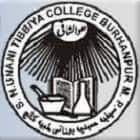
Saifia Hamidia Unani Medical College Saeeda Hospital and Research Centre, Burhanpur
Private
Burhanpur,Madhya Pradesh

Ram Krishna College of Ayurveda and Medical Science, Bhopal
Private
₹- - ₹1189350
Bhopal,Madhya Pradesh

Sarvepalli Radhakrishnan College of Ayurveda Hospital and Research Centre, Bhopal
Private
Bhopal,Madhya Pradesh

RN Kapoor Memorial Homoeopathic Hospital and Medical College, Indore
Private
₹- - ₹770000
Indore,Madhya Pradesh

Ram Krishna College of Homoeopathy and Medical Sciences, Bhopal
Private
₹- - ₹657000
Bhopal,Madhya Pradesh

Rani Dullaiya Smriti Homoeopathy Medical College and Hospital, Bhopal
Private
₹- - ₹481500
Bhopal,Madhya Pradesh

Guru Gobind Singh College of Dental Sciences and Research Centre, Burhanpur
Private
₹- - ₹748000
Burhanpur,Madhya Pradesh
Pt Shivnath Shastri Government Autonomous Ayurved College and Hospital, Burhanpur
Government
Burhanpur,Madhya Pradesh
Kerala MBBS/BDS Counselling

College of Climate Change and Environmental Science, Kerala Agricultural University, Vellanikkara
Government
Thrissur,Kerala

Century International Institute of Dental Science and Research Centre, Kasaragod
Private
Thekkil,Kerala

Malabar Medical College Hospital and Research Centre, Modakkallur
Private
₹- - ₹4033262
Modakkallur,Kerala

SGMC Venjaramoodu - Sree Gokulam Medical College and Research Foundation, Venjaramoodu
Private
Trivandrum,Kerala

SNIMS Ernakulam - Sree Narayana Institute of Medical Sciences, Chalakka
Private
₹- - ₹4115277
Kunnukara,Kerala

Poomulli Neelakandan Namboodiripad Memorial Ayurveda Medical College, Cheruthuruthy
Private
₹- - ₹1188127
Shoranur,Kerala
Tamil Nadu MBBS/BDS Counselling

ESIC Medical College and Postgraduate Institute of Medical Sciences and Research, Chennai
Government
₹- - ₹450000
Chennai,Tamil Nadu

Sri Venkateswaraa Medical College Hospital and Research Institute, Chennai
Private
₹- - ₹2900000
Chennai,Tamil Nadu

GTVMMC Tiruvannamalai - Government Tiruvannamalai Medical College and Hospital, Tiruvannamalai
Government
Tiruvannamalai,Tamil Nadu

Rajah Muthiah Dental College and Hospital, Annamalai University, Annamalai Nagar
Government
₹- - ₹1250000
C.Kothangudi,Tamil Nadu

Karpaga Vinayaga Institute of Medical Sciences and Research Centre, Palayanoor
Private
Madurantakam,Tamil Nadu

Dhanalakshmi Srinivasan Institute of Medical Sciences and Hospital, Perambalur
Private
Perambalur,Tamil Nadu

MAPIMS Kancheepuram - Melmaruvathur Adhiparasakthi Institute of Medical Sciences and Research, Kancheepuram
Private
Melmaruvathur,Tamil Nadu

Trichy SRM Medical College - Trichy SRM Medical College Hospital and Research Centre, Irungalur
Private
₹- - ₹76829
Irungalur,Tamil Nadu

PSGIMSR Coimbatore - PSG Institute of Medical Sciences and Research, Peelamedu
Private
₹- - ₹2025000
Coimbatore,Tamil Nadu

Swamy Vivekanandha Medical College Hospital and Research Institute, Namakkal
Private
Namakkal,Tamil Nadu

Adhiparasakthi Dental College and Hospital, Melmaruvathur
Private
₹- - ₹1365000
Kancheepuram,Tamil Nadu
Telangana MBBS/BDS Counselling

AIMSR Hyderabad - Apollo Institute of Medical Sciences and Research, Hyderabad
Private
₹- - ₹270000
Hyderabad,Telangana

KAMSRC Hyderabad - Kamineni Academy of Medical Sciences and Research Centre, Hyderabad
Private
Hyderabad,Telangana

SIMS Hyderabad - Shadan Institute of Medical Sciences Teaching Hospital and Research Centre, Ranga Reddy
Private
Hyderabad,Telangana

Dr VRK Women's Medical College Teaching Hospital and Research Centre, Aziznagar
Private
Hyderabad,Telangana

ACDS Secunderabad - Army College of Dental Sciences, Secunderabad
Private
₹- - ₹1380000
Secunderabad,Telangana
Andhra Pradesh MBBS/BDS Counselling

ASRAM Eluru - Alluri Sitaramaraju Academy of Medical Sciences, Eluru
Private
Somavarappadu,Andhra Pradesh

Apollo Institute of Medical Sciences and Research, Chittoor
Private
₹- - ₹343750
Chittoor,Andhra Pradesh

Dr PSIMS and RF, Chinoutpalli - Dr Pinnamaneni Siddhartha Institute of Medical Sciences and Research Foundation, Vijayawada
Private
Vijayawada,Andhra Pradesh

Gayatri Vidya Parishad Institute of Health Care and Medical Technology, Visakhapatnam
Private
Visakhapatnam,Andhra Pradesh

MIMS Nellimarla - Maharajahs Institute of Medical Sciences, Nellimarla
Private
₹- - ₹74250
Nellimarla,Andhra Pradesh

Sri Balaji Medical College, Hospital and Research Institute, Renigunta
Private
Renigunta,Andhra Pradesh

KIMS Amalapuram - Konaseema Institute of Medical Sciences and Research Foundation, Amalapuram
Private
Amalapuram,Andhra Pradesh

Dr Allu Ramalingaiah Government Homeopathic Medical College, Rajahmundry
Government
Rajahmundry,Andhra Pradesh

KLR LIDS Rajanagarm - KLRs Lenora Institute of Dental Sciences, Rajanagarm
Private
Elakolanu,Andhra Pradesh

Dr Gururaju Government Homoeopathic Medical College and Hospital, Gudivada
Government
Gudivada,Andhra Pradesh

Drs Sudha and Nageswara Rao Siddhartha Institute of Dental Sciences, Gannavaram Mandal, Krishna
Private
₹- - ₹107200
Chinna Avutapalli,Andhra Pradesh

Sri Adi Siva Sadguru Alli Saheb Sivaaryula Ayurvedic Medical College, Guntakal
Private
Guntakal,Andhra Pradesh

Maharajah's Institute of Homoeopathic Sciences, Vizianagaram
Private
₹- - ₹99000
Vizianagaram,Andhra Pradesh

Sri Adi Shiva Sadguru Ali Saheb Shivaaryula Homoeopathic Medical College, Guntakal
Private
Guntakal,Andhra Pradesh

Akula Sree Ramulu Homeopathic Hospital and Medical College, Tadepalligudem
Private
Tadepalligudem,Andhra Pradesh
West Bengal MBBS/BDS Counselling

IPGMER Kolkata - Institute of Post Graduate Medical Education and Research, Kolkata
Government
₹- - ₹29250
Kolkata,West Bengal

NRS Medical College - Nilratan Sircar Medical College, Kolkata
Government
₹- - ₹40500
Kolkata,West Bengal
.jpg)
CMSDH Kolkata - College of Medicine and Sagore Dutta Hospital, Kolkata
Government
₹- - ₹47020
Kolkata,West Bengal

JIMSH, Kolkata - Jagannath Gupta Institute of Medical Sciences and Hospital, Kolkata
Private
₹- - ₹2541000
Kolkata,West Bengal

Kusum Devi Sunderlal Dugar Jain Dental College and Hospital, Kolkata
Private
₹- - ₹1090000
Kolkata,West Bengal

Metropolitan Homoeopathic Medical College and Hospital, Kolkata
Private
₹- - ₹719500
Kolkata,West Bengal
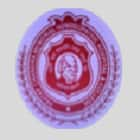
Pratap Chandra Memorial Homoeopathic Hospital and College, Kolkata
Private
₹- - ₹675000
Kolkata,West Bengal

Barasat Government Medical College and Hospital, North 24 Parganas
Government
North 24 Parganas,West Bengal

Sarat Chandra Chattopadhyay Government Medical College and Hospital, Howrah
Government
Howrah,West Bengal

Tamralipto Government Medical College and Hospital, Purba Medinipur
Government
Purba Medinipur,West Bengal

Diamond Harbour Government Medical College and Hospital, Diamond Harbour
Government
Diamond Harbour,West Bengal

ICARE Institute of Medical Science and Research and Dr Bidhan Chandra Roy Hospital, Haldia
Private
Haldia,West Bengal

Gouri Devi Institute of Medical Sciences and Hospital, Durgapur
Private
₹- - ₹2516000
Rajbandh,West Bengal

Shri Ramkrishna Institute of Medical Sciences and Sanaka Hospitals, Durgapur
Private
Durgapur,West Bengal
Rajasthan MBBS/BDS Counselling

SMS Medical College Jaipur - Sawai Man Singh Medical College, Jaipur
Government
₹- - ₹431250
Jaipur,Rajasthan

Jaipur National University Institute for Medical Sciences and Research Centre, Jaipur
Private
Jaipur,Rajasthan

RNT Medical College Udaipur - Rabindra Nath Tagore Medical College, Udaipur
Government
₹- - ₹435750
Udaipur,Rajasthan

JLN Medical College Ajmer - Jawaharlal Nehru Medical College, Ajmer
Government
₹- - ₹410550
Ajmer,Rajasthan

Dr SS Tantia Medical College Hospital and Research Centre, Sri Ganganagar
Private
Sri Ganganagar,Rajasthan

Maharaja Ganga Singh Dental College and Research Centre, Sri Ganganagar
Private
₹- - ₹720000
Sri Ganganagar,Rajasthan

PDCRC Udaipur - Pacific Dental College and Research Center, Udaipur
Private
₹- - ₹1227000
Udaipur,Rajasthan

Surendera Dental College and Research Institute, Sri Ganganagar
Private
₹- - ₹522000
Sri Ganganagar,Rajasthan
Bihar MBBS/BDS

VIMS Nalanda - Bhagwan Mahavir Institute of Medical Sciences, Pawapuri
Government
₹- - ₹60750
Nalanda,Bihar

ANMMCH Gaya - Anugrah Narayan Magadh Medical College and Hospital, Gaya
Government
₹- - ₹33400
Gaya,Bihar

JanNayak Karpoori Thakur Medical College and Hospital, Madhepura
Government
₹- - ₹79000
Madhepura,Bihar

Mata Gujri Memorial Medical College and Lions Seva Kendra Hospital, Kishanganj
Private
₹- - ₹5865000
Kishanganj,Bihar

Dr Yadubir Sinha Homoeopathic Medical College and Hospital, Darbhanga
Private
₹- - ₹735000
Darbhanga,Bihar
Haryana MBBS/BDS

PGIMS Rohtak - Pt Bhagwat Dayal Sharma Post Graduate Institute of Medical Sciences, Rohtak
Government
₹- - ₹173140
Rohtak,Haryana

BPS Goverment Medical College - BPS Government Medical College for Women, Sonepat
Government
Sonipat,Haryana
.png)
Baba Kheta Nath Government Ayurvedic College and Hospital, Narnaul
Government
₹- - ₹69669
Narnaul,Haryana
Maharishi Markandeshwar College of Medical Sciences and Research, Sadopur, Ambala
Private
₹- - ₹7802500
Ambala,Haryana

Shri Baba Mastnath Ayurvedic College, Baba Mastnath University, Rohtak
Private
₹- - ₹1755000
Rohtak,Haryana
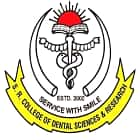
Sudha Rustagi College of Dental Sciences and Research, Faridabad
Private
₹- - ₹1154000
Faridabad,Haryana

BDM College of Ayurveda Science and Hospital, Chhuchhakwas, Jhajjar
Private
₹- - ₹1440000
Jhajjar,Haryana
Punjab MBBS/BDS Counselling
Chhattisgarh MBBS/BDS

JNMC Raipur - Pt Jawahar Lal Nehru Memorial Medical College, Raipur
Government
₹- - ₹250000
Raipur,Chhattisgarh

Bharat Ratna Late Shri Atal Bihari Vajpayee Memorial Government Medical College, Rajnandgaon
Government
Rajnandgaon,Chhattisgarh

Late Shri Lakhiram Agrawal Memorial Government Medical College, Raigarh
Government
Bendrchuwa,Chhattisgarh

GMC Ambikapur - Rajmata Shrimati Devendra Kumari Singhdeo Government Medical College, Ambikapur
Government
Ambikapur,Chhattisgarh

Late Bali Ram Kashyap Memorial Government Medical College, Jagdalpur
Government
Pandripani,Chhattisgarh

SSIMS Bhilai - Shri Shankaracharya Institute of Medical Science, Bhilai
Private
₹- - ₹3596341
Bhilai,Chhattisgarh

Abhishek Mishra Memorial Medical College and Research, Bhilai
Private
₹- - ₹3353341
Bhilai,Chhattisgarh

Shri Rawatpura Sarkar Institute of Medical Sciences and Research, Raipur
Private
₹- - ₹3353341
Raipur,Chhattisgarh

New Horizon Dental College and Research Institute, Bilaspur
Private
₹- - ₹1058400
Bilaspur,Chhattisgarh

CDCRI Rajnandgaon - Chhattisgarh Dental College and Research Institute, Rajnandgaon
Private
₹- - ₹972000
Sundara,Chhattisgarh

Triveni Institute of Dental Sciences Hospital and Research Centre, Bilaspur
Private
₹- - ₹1007956
Bodri,Chhattisgarh
Odisha MBBS/BDS

VIMSAR Burla - Veer Surendra Sai Institute of Medical Sciences and Research, Burla
Government
₹- - ₹170750
Burla,Odisha
Assam MBBS/BDS

FAAMCH Barpeta - Fakhruddin Ali Ahmed Medical College and Hospital, Barpeta
Government
Dhan Bandha,Assam
Himachal Pradesh MBBS/BDS

RPGMC Kangra - Dr Rajendra Prasad Government Medical College, Tanda
Government
Kangra,Himachal Pradesh

SLBSGMC&H Mandi - Shri Lal Bahadur Shastri Government Medical College, Mandi
Government
Ner Chowk,Himachal Pradesh

Pt Jawahar Lal Nehru Government Medical College and Hospital, Chamba
Government
Chamba,Himachal Pradesh

Himachal Pradesh Government Dental College and Hospital, Shimla
Government
₹- - ₹155000
Shimla,Himachal Pradesh

Rajiv Gandhi Government Post Graduate Ayurvedic College, Kangra
Government
₹- - ₹179950
Gharnot,Himachal Pradesh

Maharishi Markandeshwar Medical College and Hospital, Solan
Private
₹- - ₹5082000
Kumarhatti,Himachal Pradesh

Solan Homoeopathic Medical College and Hospital, Solan
Private
₹- - ₹679939
Kumarhatti,Himachal Pradesh
Jharkhand MBBS/ BDS

Laxmi Chandravansi Homoeopathic Medical College Hospital and Research Centre, Palamu
Private
Palamu,Jharkhand

HCDSH Hazaribagh - Hazaribag College of Dental Sciences and Hospital, Hazaribag
Private
₹- - ₹1390000
Hazaribagh,Jharkhand
Tripura MBBS/BDS
Jammu and Kashmir MBBS/BDS

GMC Srinagar - Government Medical College, Srinagar, Kashmir
Government
₹- - ₹68449
Srinagar,Jammu and Kashmir

SKIMS Srinagar - Sher-I-Kashmir Institute of Medical Sciences, Srinagar
Government
Srinagar,Jammu and Kashmir
Puducherry MBBS/BDS

IGMCRI Kathirkamam - Indira Gandhi Medical College and Research Institute, Kathirkamam
Government
₹- - ₹381650
Puducherry,Puducherry

MGPGI Pondicherry - Mahatma Gandhi Post Graduate Institute of Dental Sciences, Pondicherry
Government
₹- - ₹254170
Puducherry,Puducherry

PIMS Pondicherry - Pondicherry Institute of Medical Sciences, Pondicherry
Private
Puducherry,Puducherry

Sri Venkateshwaraa Medical College Hospital and Research Centre, Pondicherry
Private
₹- - ₹2160000
Ariyur,Puducherry

Rajiv Gandhi Institute of Veterinary Education and Research, Puducherry
Government
₹- - ₹273255
Puducherry,Puducherry
Uttarakhand MBBS/BDS

Soban Singh Jeena Government Institute of Medical Science and Research, Almora
Government
Almora,Uttarakhand

Veer Chandra Singh Garhwali Government Institute of Medical Science and Research, Srinagar
Government
Pauri Garhwal,Uttarakhand

Shri Guru Ram Rai Institute of Medical and Health Sciences, Dehradun
Private
₹- - ₹11552114
Dehradun,Uttarakhand

SDCH Rishikesh - Seema Dental College and Hospital, Rishikesh
Private
₹- - ₹925000
Rishikesh,Uttarakhand

UDMRI Dehradun - Uttaranchal Dental and Medical Research Institute, Dehradun
Private
Doiwala,Uttarakhand
Delhi MBBS/BDS

NDMC Medical College Delhi - North Delhi Municipal Corporation Medical College, New Delhi
Government
₹- - ₹301000
New Delhi,Delhi

Dr BR Sur Homeopathic Medical College, Hospital and Research Centre, New Delhi
Government
₹- - ₹93700
New Delhi,Delhi
Chandigarh MBBS/BDS Admissions

GMCH Chandigarh - Government Medical College and Hospital, Chandigarh
Government
₹- - ₹112500
Chandigarh,Chandigarh
Excretory Systems in Different Organisms
Diverse organisms have different excretory systems based on their habitat and lifestyle:
Single-celled Organisms:
Protozoa: Contain a contractile vacuole that gets rid of waste products.
Hydra: Uses diffusion for waste removal.
Invertebrates
Earthworms: Use nephridia for removing waste.
Insects: They have Malpighian tubules with which they secrete waste. Example- Phylum Arthropoda.
Vertebrates:
Fish: The system relies on gills and kidneys to excrete ammonia (ammonotelic organisms).
Amphibians: The system depends on the skin and kidneys to excrete urea (ureotelic organisms).
Reptiles and Birds: They primarily utilise the kidneys and cloaca to excrete uric acid (uricotelic organisms).
Mammals: The system uses the kidneys, which extract the waste products from the body and excrete them as urea (ureotelic organisms).
The Human Excretory System
The human excretory system consists of several organs that work together to remove waste products from the human body:
Parts:
Kidneys: The system filters blood and comes out as urine.
Ureters: The system removes urine from the kidneys to the bladder.
Urinary Bladder: The system holds urine in the bladder until it is expelled from the body through excretion.
Urethra: The tube through which urine comes out of the body.
Nephron
Nephrons are the basic structural and functional units of the kidneys in the human excretory system. Each kidney contains about 1 million nephrons and is responsible for filtering blood and forming urine. Nephrons consist of a Bowman's capsule surrounded by a network of capillaries called the glomerulus, followed by the long tubular proximal convoluted tubule, loop of Henle, distal convoluted tubule and collecting duct. The nephron perform processes like filtration, absorption, secretion and excretion to remove waste while retaining the useful substances.
Hormones that Control Urinary Secretion
ADH (Anti-diuretic hormone): It regulates water reabsorption in the kidneys.
Aldosterone: It influences sodium reabsorption.
Other Excretory Organs in Humans
Besides kidneys, human beings have many other organs that help in excretion:
Skin: Sweat glands remove water, salts, and minute amounts of urea.
Lungs: Release carbon dioxide and water vapour during respiration.
Liver: Converts ammonia to urea and breaks down haemoglobin to form bile pigments.
NCERT Exemplar Solutions Subject-wise link:
Diseases of the Excretory System
The excretory system can be affected by a range of diseases:
Kidney stones: Concentrated minerals that cause pain and blockage.
Urinary tract infection (UTI): Bacterial infection of the urinary system.
Glomerulonephritis: Inflammation of the kidney glomeruli.
Chronic kidney disease (CKD): Slow progression of kidney function loss.
Role of the Excretory System in Osmoregulation
Osmoregulation is the maintenance of water and electrolyte balance in an animal's body. The excretory system maintains:
Proper salt-water balance.
Adaptations range from simple diffusion in unicellular organisms to the most complex systems in vertebrates.
Surviving both in freshwater and terrestrial habitats.
NCERT Solutions Subject-wise link:
Tips, Tricks, and Strategies to Prepare For Excretory Products and Their Elimination
This table outlines effective tips and strategies to master the topic of Excretory Products and Their Elimination.
Tips/Tricks | Description |
Use Mnemonics | Create phrases to remember key concepts (e.g., "Urea is less toxic than ammonia"). |
Visual Aids | Utilise diagrams of the human excretory system to visualise organs and functions. |
Practice Past Papers | Solve previous years' questions to familiarise yourself with exam patterns. |
Group Study | Discuss topics with peers to reinforce learning through teaching. |
Flashcards | Make flashcards for important terms like "glomerular filtration rate" and "micturition." |
Weightage of Topics in Different Entrance Exams
Understanding the weightage of topics can help prioritise your study efforts in Excretory Products and Their Elimination for various entrance exams.
Entrance Exam | Weightage (%) | Important Topics |
NEET | 25% | |
AIIMS | 30% | |
CBSE Class 11 | 20% |
Types of Questions Asked on the Topic in Different Exams
Familiarising yourself with the types of questions related to Excretory Products and Their Elimination can improve your exam performance.
Entrance Exam | Types of Questions |
Conceptual questions, diagram labelling | |
Case studies related to excretory disorders | |
Short answer questions, long answer explanations |
Use this structured approach to help you prepare effectively for the chapter on Excretory Products and Their Elimination in your biology curriculum. With mnemonics, visual aids, and practice questions, critical concepts will be better understood and retained.
One of the most critical concepts that the student aspirant to a career in biology needs to know is that of excretory products and their elimination, especially those taking NEET exams. Such knowledge not only keeps one learning but also makes one more conscious of the functions occurring within the body.
Recommended videos on "Excretory Products and Their Elimination"
Types of Animals Based on Excretory Wastes
Formation of Urea - Krebs-Henseleit Cycle
Human Excretory System: Kidneys and Their Exterior Aspects
Frequently Asked Questions (FAQs)
Excretory products are waste materials eliminated from the body to maintain homeostasis. These products include ammonia, urea, uric acid, carbon dioxide, water, and various ions. Elimination primarily occurs through the kidneys, lungs, skin, and large intestine.
News and Notifications
Student Community: Where Questions Find Answers

























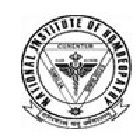
























.JPG)



.jpg)
.jpg)
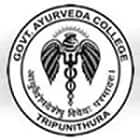


















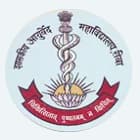





.jpg)














































.JPG)































































.jpg)














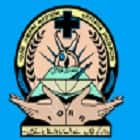







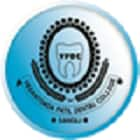



















































.jpg)
.jpg)


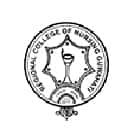














































.png)







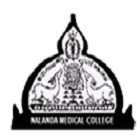














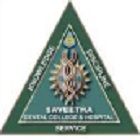




















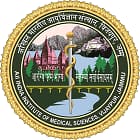
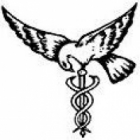



















































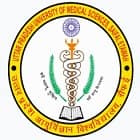




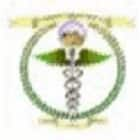










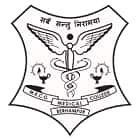










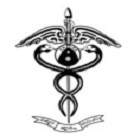

































































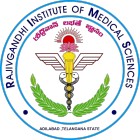


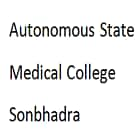



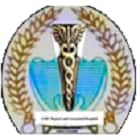


























































































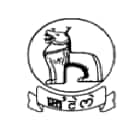





































.jpg)


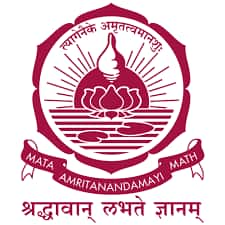


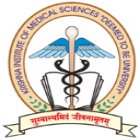


















































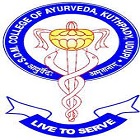



















.JPG)
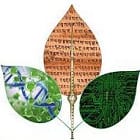









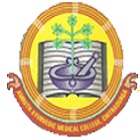










































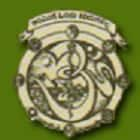

.JPG)
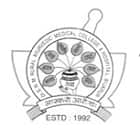




























































































































































































































































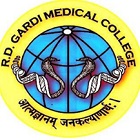





























































.jpg)








































.png)

.JPG)
.JPG)
.jpg)



.jpg)
































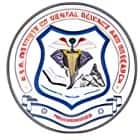


































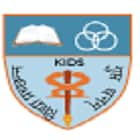









































































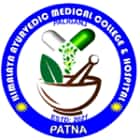















.JPG)








